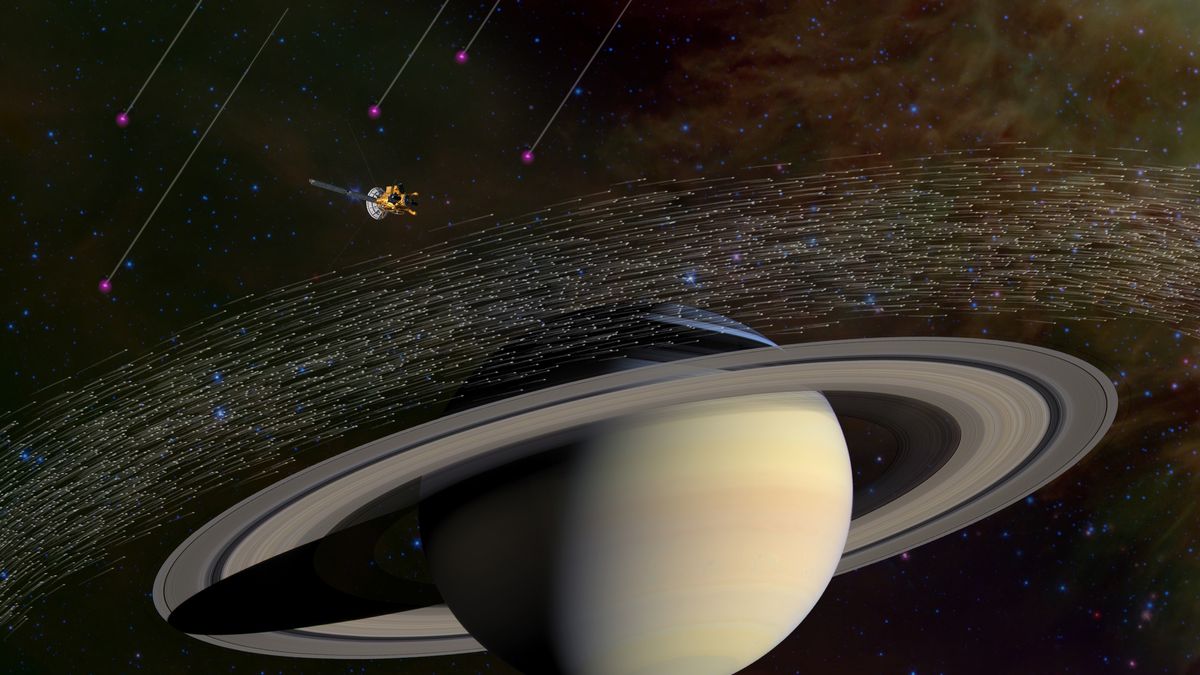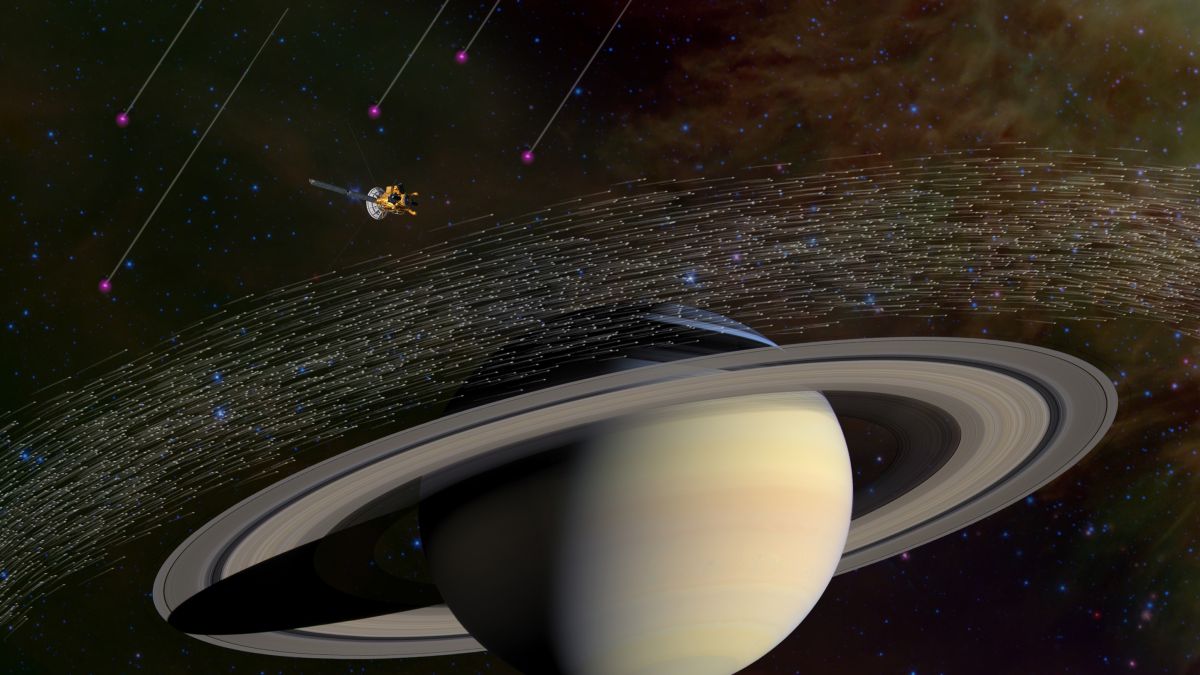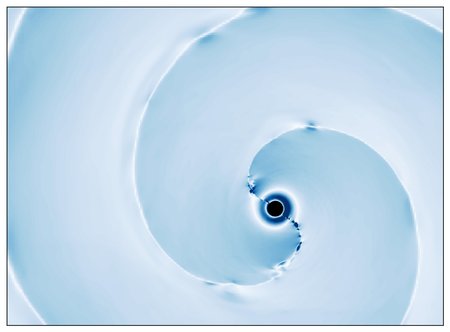
LAST UPDATED May 9. Launch dates are subject to change and will be updated throughout the year as firmer dates arise. Please DO NOT schedule travel based on a date you see here. Launch dates are collected from NASA, ESA, Roscosmos, Spaceflight Now and others.
Watch NASA webcasts and other live launch coverage on our webcast page. Find out what’s up in the night sky this month with our visible planets guide and skywatching forecast.
Wondering what happened today in space history? Check out our “On This Day in Space” video show here!
May
May 4-5: The Eta Aquarid meteor shower peaks.
May 9: A Chinese Long March 7 rocket will launch the Tianzhou 4 resupply ship to the Chinese space station. It will lift off at approximately 2:15 p.m. EDT (1815 GMT) from Wenchang, China.
May 16: The full moon of May, known as the Flower Moon, arrives at 12:14 a.m. EDT (0414 GMT).
May 16-17: A total lunar eclipse, also known as a Blood Moon, will be visible from North and South America, Europe, Africa and parts of Asia.
May 19: A United Launch Alliance Atlas V rocket will launch Boeing’s CST-100 Starliner spacecraft on its second uncrewed mission to the International Space Station, following a partial failure in December 2019. It will lift off from Cape Canaveral Space Force Station in Florida at 6:54 p.m. EDT (2254 GMT).
May 27: A Rocket Lab Electron rocket will launch NASA’s Cislunar Autonomous Positioning System Technology Operations and Navigation Experiment (CAPSTONE) mission to the moon from the Mahia Peninsula in New Zealand.
May 29: Jupiter and Mars will make a close approach in the dawn sky and will be just over one-half degree apart. While they won’t be close enough to glimpse together by telescope, the planets will be visible together with the naked eye or in a pair of binoculars.
May 30: The new moon arrives at 7:30 a.m. EDT (1230 GMT).
Also scheduled to launch in May (from Spaceflight Now):
- An Arianespace Vega rocket will launch the LARES 2 satellite for the Italian space agency. It will lift off from the Guiana Space Center in Kourou, French Guiana.
- India’s Small Satellite Launch Vehicle (SSLV), designed to carry small satellites into low Earth orbit will launch on its first orbital test flight.
- A firefly Alpha rocket will launch on its second test flight from the Vandenberg Space Force Base in California.
- Russia will launch an Angara 1.2 rocket carrying an MKA-R radar satellite. This will be the first launch attempt for the Angara 1.2 rocket. Delayed from April.
June
June 1: A SpaceX Falcon 9 rocket will launch a rideshare mission called Transporter 5. It will lift off from Cape Canaveral Space Force Station, Florida.
June 3: Russia will use a Soyuz rocket to launch the Progress 81 cargo resupply spacecraft to the International Space Station. It will lift off from the Baikonur Cosmodrome in Kazakhstan at 5:23 a.m. EDT (0923 GMT).
June 7: SpaceX will launch the Dragon CRS-25 cargo resupply mission to the International Space Station from NASA’s Kennedy Space Center in Florida. It will lift off from the Kennedy Space Center in Florida at 11:25 a.m. EDT (1525 GMT).
June 14: The full moon of June, known as the Strawberry Moon, arrives at 7:52 a.m. EDT (1152 GMT). It will also be the first “supermoon” of the year.
June 18: A United Launch Alliance Atlas V rocket will launch a sixth Space Based Infrared System Geosynchronous satellite (SBIRS GEO 6). The satellite will be used for early-warning missile detection and will launch from Cape Canaveral Space Force Station, Florida.
June 21: Solstice. Today marks the first day of summer in the Northern Hemisphere and the first day of winter in the Southern Hemisphere.
June 22: Arianespace will use an Ariane 5 rocket to launch the MEASAT 3d and GSAT 24 communications satellites from the Guiana Space Center in Kourou, French Guiana. Delayed from April. Launch window 5:03–6:43 p.m. EDT (2103–2244 GMT).
June 28: The new moon arrives at 10:52 p.m. EDT (0252 June 29 GMT).
Also scheduled to launch in June (from Spaceflight Now):
- A United Launch Alliance Atlas V rocket will launch the Wide Field Of View (WFOV) experimental missile warning satellite for the U.S. Space Force in a mission titled USSF 12. It will lift off from Space Launch Complex 41 at Cape Canaveral Space Force Station in Florida.
- A SpaceX Falcon Heavy rocket will launch the USSF 44 mission for the U.S. Space Force. It will lift off from Pad 39A at NASA’s Kennedy Space Center in Florida.
- A SpaceX Falcon 9 will launch the Nilesat 301 geostationary communications satellite from Cape Canaveral Space Force Station in Florida. Delayed from April.
- A Chinese Long March 2F rocket will launch three Chinese astronauts on the Shenzhou 14 spacecraft to dock with the Chinese space station. It will launch from Jiuquan, China. Delayed from May.
- Astra will launch the first pair of small CubeSats for NASA’s TROPICS mission from Cape Canaveral Space Force Station in Florida.
- Astra will launch the second pair of small CubeSats for NASA’s TROPICS mission from Cape Canaveral Space Force Station in Florida.
July
July 13: The full moon of July, known as the Buck Moon, arrives at 2:38 p.m. EDT (1838 GMT). It will also be the biggest “supermoon” of the year.
July 28: The new moon arrives at 1:54 p.m. EDT (1754 GMT).
Also scheduled to launch in July (from Spaceflight Now):
- A SpaceX Falcon 9 rocket will launch the first two WorldView Legion Earth observation satellites for Maxar Technologies. It will lift off from Cape Canaveral Space Force Station in Florida.
- A Chinese Long March 5B rocket will launch the Wentian laboratory module, the second major element of China’s space station.
- Astra will launch the third pair of small CubeSats for NASA’s TROPICS mission from Cape Canaveral Space Force Station in Florida.
August
Aug. 1: A SpaceX Falcon Heavy rocket will launch NASA’s Psyche mission to study the metal asteroid Psyche. It will lift off at 2:26 p.m. EDT (1826 GMT) from NASA’s Kennedy Space Center in Florida.
Aug. 11: The full moon of August, known as the Sturgeon Moon, arrives at 9:36 p.m. EDT (0136 Aug. 12 GMT).
Aug. 11-12: The Perseid meteor shower peaks.
Aug. 27: The new moon arrives at 4:17 a.m. EDT (0817 GMT).
Also scheduled to launch in August (from Spaceflight Now):
- A United Launch Alliance Atlas V rocket will launch SES 20 and SES 21 communications satellites. It will lift off from Cape Canaveral Space Force Station, Florida.
- NASA’s Space Launch System (SLS) megarocket will launch on its first uncrewed test flight of an uncrewed Orion crew capsule, for a mission known as Artemis 1. The Orion spacecraft will orbit the moon before returning to Earth for a splashdown in the Pacific Ocean. The mission has been delayed several times.
September
Sept. 1: NASA and SpaceX will launch the Crew-5 mission to the International Space Station. The Crew Dragon will be carrying NASA astronauts Nicole Mann, Josh Cassada, Japanese astronaut Koichi Wakata, and Russian cosmonaut Anna Kikina. The Falcon 9 rocket will lift off at NASA’s Kennedy Space Center in Florida.
Sept. 10: The full moon of September, known as the Harvest Moon, arrives at 5:59 a.m. EDT (0959 GMT).
Sept. 20: The European Space Agency’s ExoMars rover, named Rosalind Franklin, will launch to the Red Planet. It will lift off from the Baikonur Cosmodrome in Kazakhstan on a Russian Proton rocket.
Sept. 21: Russia will launch a team of cosmonauts and astronauts on a Soyuz rocket to the International Space Station. The Soyuz MS-22 spacecraft will lift off from Baikonur Cosmodrome, Kazakhstan.
Sept. 23: Autumnal equinox. Today marks the first day of fall in the Northern Hemisphere and the first day of spring in the Southern Hemisphere.
Sept 24: A SpaceX Falcon 9 rocket will launch 14 Tranche 0 demonstration satellites from the Vandenberg Space Force Base, California.
Sept. 25: The new moon arrives at 5:54 p.m. EDT (2154 GMT).
Sept. 30: A United Launch Alliance Atlas V rocket will launch the Joint Polar Satellite System 2 (JPSS 2) for NASA and NOAA as well as the Low-Earth Orbit Flight Test of an Inflatable Decelerator (LOFTID) on a test flight. LOFTID is a joint project between NASA and ULA.
October
Oct. 8: The Draconid meteor shower, which is active Oct. 6-10, will peak overnight.
Oct. 9: The full moon of October, known as the Hunter’s Moon, arrives at 4:55 p.m. EDT (2055 GMT).
Oct. 20-21: The annual Orionid meteor shower, which is active all month long, peaks overnight.
Oct. 25: The new moon arrives at 6:48 a.m. EDT (1048 GMT).
Oct. 25: A partial solar eclipse will be visible from Europe, northern Africa, the Middle East and western parts of Asia.
Also scheduled to launch in October (from Spaceflight Now):
- A SpaceX Falcon 9 rocket will launch a rideshare mission called Transporter 6. It will lift off from Cape Canaveral Space Force Station in Florida.
- A SpaceX Falcon Heavy rocket will launch the USSF 52 mission for the U.S. Space Force. It will lift off from Pad 39A at NASA’s Kennedy Space Center in Florida.
- A SpaceX Falcon 9 rocket will launch a Dragon 2 spacecraft on a resupply mission to the International Space Station.
- A Chinese Long March 5B rocket will launch the third major element of China’s space station, the Mengtian laboratory module.
November
Nov. 4-5: The annual South Taurid meteor shower peaks overnight.
Nov. 7-8: A total lunar eclipse will be visible from Asia, Australia, North America, parts of northern and eastern Europe and South America.
Nov. 8: The full moon of November, known as the Beaver Moon, arrives at 6:02 a.m. EST (1102 GMT).
Nov. 11-12: The annual North Taurid meteor shower peaks overnight.
Nov. 15: The Surface Water and Ocean Topography (SWOT) mission, jointly developed by NASA and the French space agency CNES, will launch on a SpaceX Falcon 9 rocket from Vandenberg Space Force Base in California.
Nov. 17-18: One of the most anticipated meteor showers of the year, the Leonid meteor shower peaks overnight.
Nov. 23: The new moon arrives at 5:57 p.m. EST (2257 GMT).
Also scheduled to launch in November:
- A SpaceX Falcon 9 rocket will launch the Polaris Dawn mission commanded by Jared Isaacman and will be his second trip to space. Isaacman will be joined by pilot Scott “Kidd” Poteet, and SpaceX employees Sarah Gillis and Anna Menon.
- A SpaceX Falcon 9 rocket will launch a U.S. Space Force mission, USSF 67, from the Kennedy Space Center, Florida.
December
Dec. 7: The full moon of December, known as the Cold Moon, arrives at 11:08 p.m. EST (0408 Dec. 8 GMT).
Dec. 13-14: The annual Geminid meteor shower, one of the best meteor showers of the year, peaks overnight.
Dec. 21: Solstice. Today marks the first day of winter in the Northern Hemisphere and the first day of summer in the Southern Hemisphere.
Dec. 21-22: The annual Ursid meteor shower peaks overnight.
Dec. 23: The new moon arrives at 5:16 a.m. EDT (0916 GMT).
Also scheduled to launch in December:
More coming in 2022…
3rd Quarter: A SpaceX Falcon Heavy rocket will launch a new-generation Boeing-build broadband satellite ViaSat 3 Americas.
Late 2022: A United Launch Alliance Vulcan Centaur rocket will launch on its inaugural flight with the Peregrine commercial lunar lander for Astrobotic. It will lift off from Space Launch Complex 41 at Cape Canaveral Space Force Station in Florida.
Late 2022: A United Launch Alliance Atlas V rocket will launch Boeing’s CST-100 Starliner spacecraft on its first crewed flight. NASA astronauts Butch Wilmore and Mike Fincke, along with an unidentified third crew member, will fly on the mission. The Crew Test Flight to the International Space Station will lift off from Cape Canaveral Space Force Station, Florida.
TBD: India’s Small Satellite Launch Vehicle (SSLV) will launch its first commercial mission with four Earth observation satellites for BlackSky Global. It will lift off from the Satish Dhawan Space Center in Sriharikota, India.
Please send any corrections, updates or suggested calendar additions to hweitering@space.com. Follow Space.com for the latest in space science and exploration news on Twitter @Spacedotcom and on Facebook.



